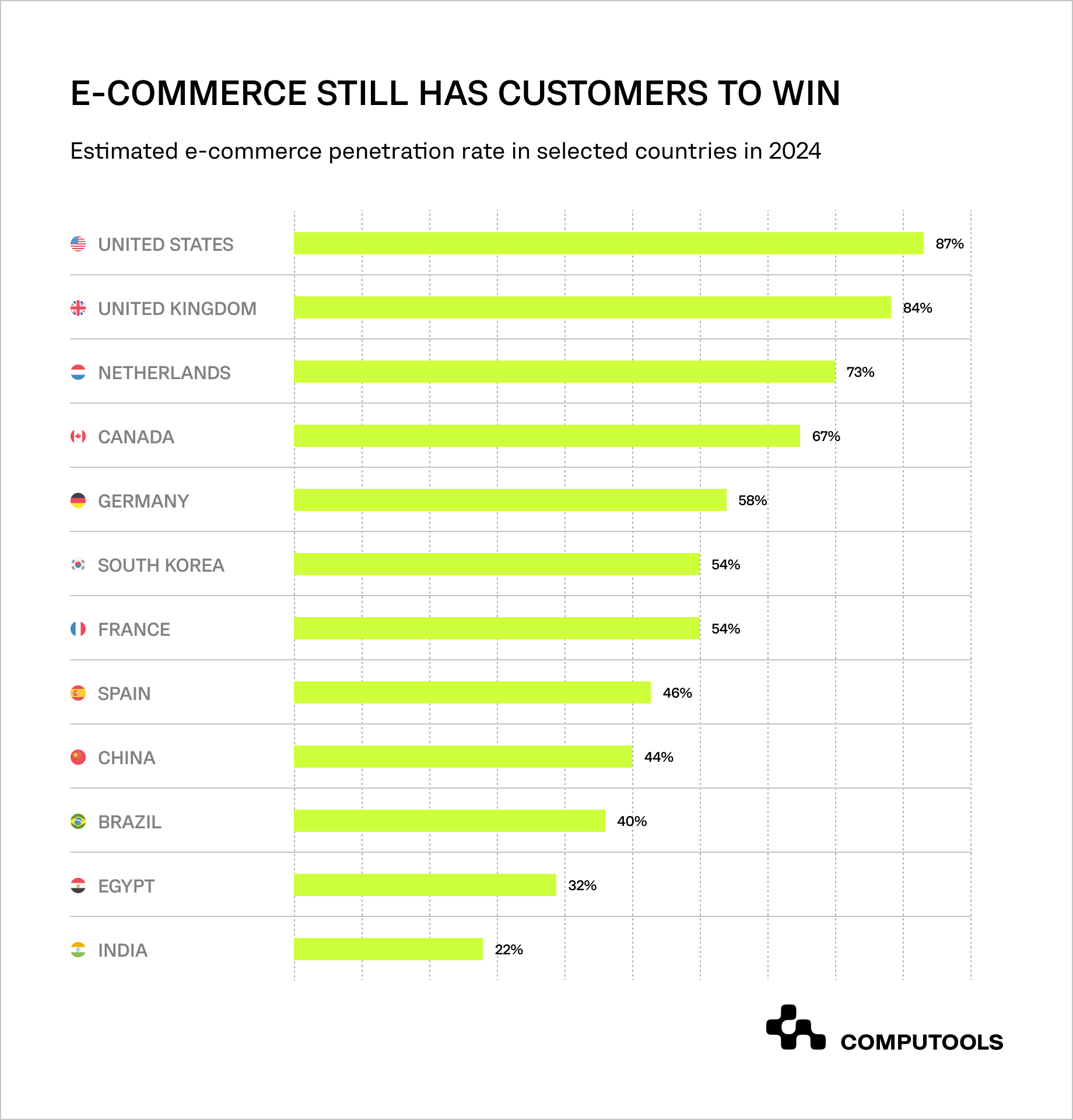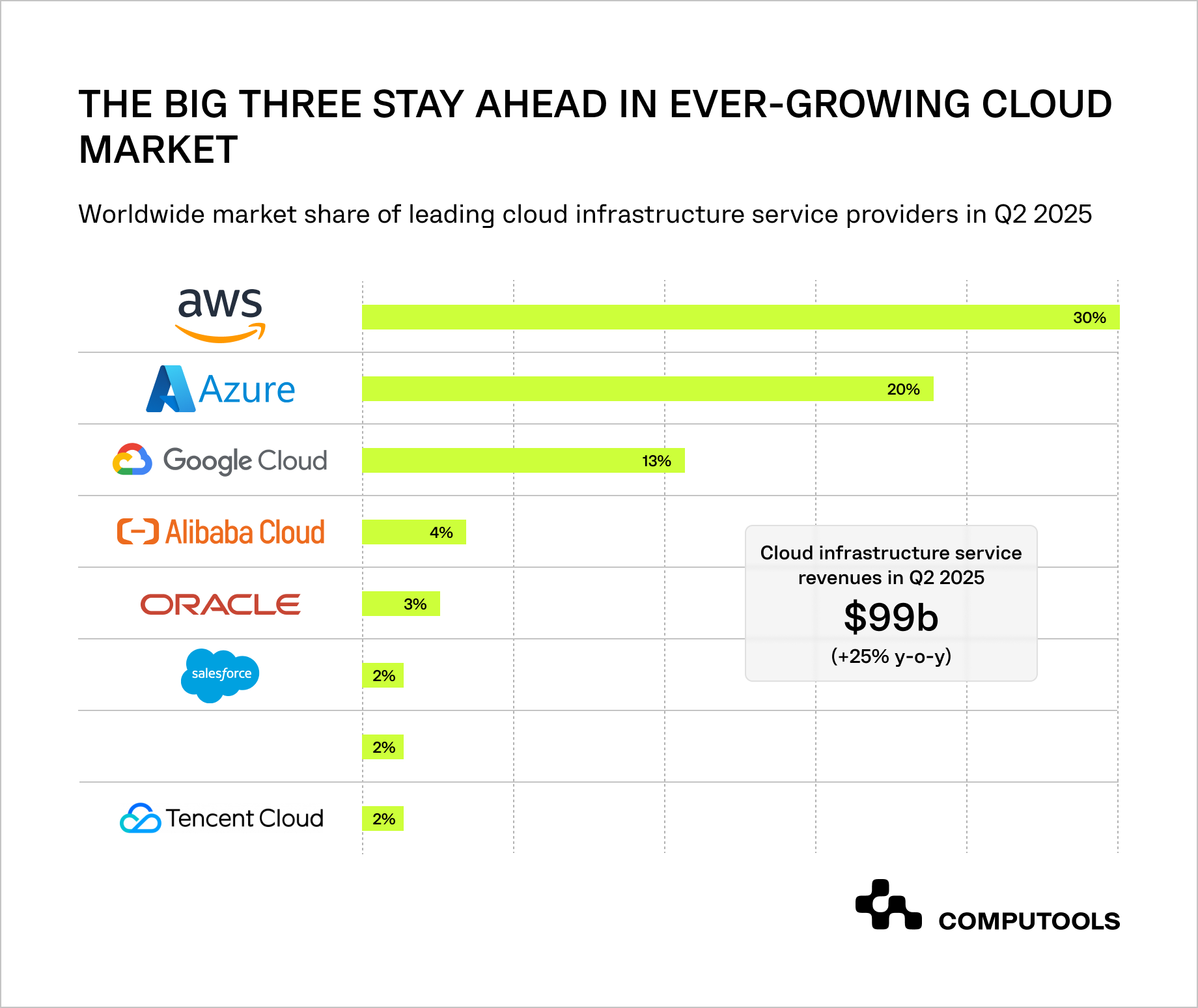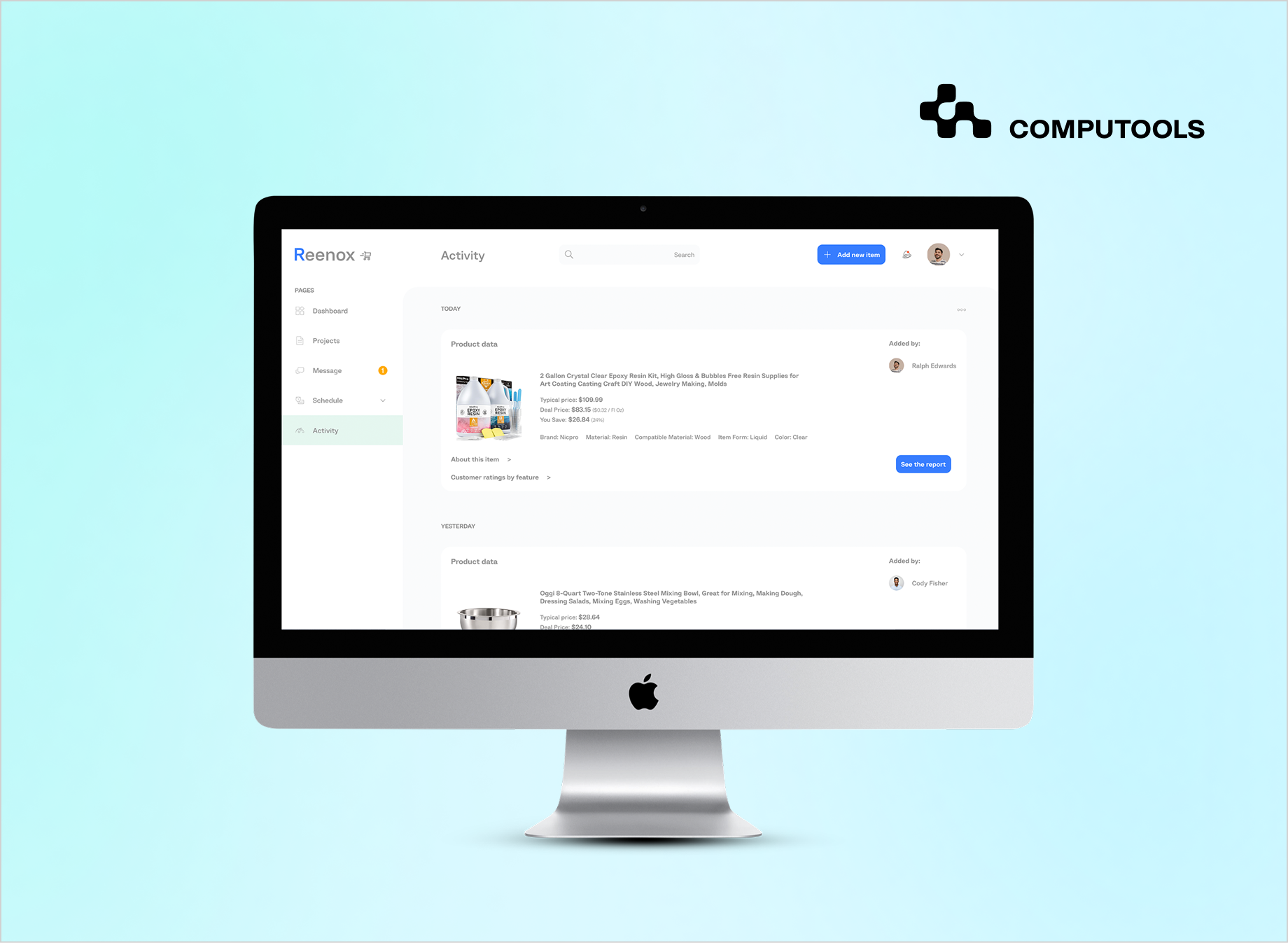In today’s multi-vendor retail world, businesses manage dozens of suppliers, marketplaces, warehouse systems, and CRM platforms. Each of them generates thousands of data pieces every day (from orders to product movements) but without centralized control, this data often remains fragmented. With the steady growth of e-commerce and multichannel sales, the need for a single analytical plane only grows stronger.

At the same time, the dominance of cloud providers is pushing retailers to build analytics on a scalable infrastructure with unified data connectors.

In order not to drown in the chaos of disparate tables and dashboards by department, brands are implementing a retail ops dashboard, a system that provides a unified view of business operations in real time and ensures centralized decision-making.
Such gaps between data and solutions lead to inaccurate forecasts, duplication of processes and loss of profit. That is why companies are moving to the implementation of retail ops dashboards, intelligent systems that create a unified view of business operations in real time, combining analytics, control and management in a single interface.
Computools has deep expertise in creating such solutions for retail, from custom dashboards for business operations to large-scale retail operations automation dashboard systems. Using the real-world case of Reenox, we will show how to build an effective web dashboard for centralized operations for a multi-vendor business, from idea and architecture to results that transform the operational efficiency of companies.

How Computools built a retail ops dashboard for Reenox
The client Reenox manages a large-scale network of suppliers, online stores, and warehouses across multiple countries.
Before working with Computools, the company faced a typical multi-vendor retail management system problem: data from various sources (from procurement to logistics) was collected manually, reporting took days, and management decisions were based on outdated or incomplete information.
The Computools team offered a solution that transformed fragmented processes into a unified view of business operations, creating a modern retail ops dashboard that combined dozens of data sources into a single ecosystem.
We developed a centralized operations dashboard, which became the core of Reenox’s new digital infrastructure. The platform covers all key areas (from procurement and warehousing to online sales and financial analytics) and works as a store management dashboard with full data transparency in real time.
The interface is convenient and intuitive: managers can see the status of inventory, track sales, monitor the efficiency of suppliers and teams.
To do this, we applied our retail software development services and web development services, integrating various client systems into one multi-vendor retail software solution. Now Reenox has a centralized retail inventory and sales dashboard, which provides real-time retail operations monitoring and provides deep analytics using retail data visualization tools.
The results exceeded expectations:
• the time for making management decisions was reduced by 40%;
• the accuracy of demand forecasting increased by 35%;
• the cost of manual analytics was halved.
Thanks to the implementation of the retail ops dashboard, Reenox received centralized retail performance tracking and turned chaotic data into a strategic asset.
This project is an example of how dashboard solutions for retail businesses can change the approach to managing a network of suppliers, warehouses, and marketplaces, paving the way for a new era of multi-vendor eCommerce platform analytics.

How to build a centralized operations dashboard for multi-vendor retail
When Computools began working with Reenox, one of the main challenges was the lack of unified data visibility. Like many multi-vendor retailers, Reenox operated dozens of separate systems: supplier databases, warehouse software, CRM, marketplaces, and financial dashboards — each storing its own version of the truth. Building a centralized operations dashboard became the logical next step toward digital transformation.
Step 1. Define Key Retail KPIs and Analytics
Every effective store management dashboard starts with clarity about what matters most. Together with the client, we identified metrics that directly influenced business outcomes: inventory turnover, supplier efficiency, average order value, and customer retention rate. This approach allowed us to design an interface where analytics were not just visual elements, but practical tools for day-to-day operational decisions.
Step 2. Audit and Integrate Data Sources
The foundation of any multi-vendor platform management tool lies in robust integration. During the initial phase, Computools’ engineers performed a full audit of Reenox’s systems, from ERP and CRM platforms to eCommerce marketplaces, POS systems, and logistics services.
Connecting these data pipelines enabled the team to create an operations dashboard for online marketplaces that consolidated all transactional, operational, and supplier data in one place. As a result, managers could track every process — from purchase orders to product delivery — in a single interface.
Step 3. Design the Architecture of Retail Operations Dashboard Software
To make the system flexible and future-proof, we used modular microservices combined with an API-first approach. This architecture allows Reenox to easily add or remove vendors without downtime, adapting quickly to new markets or business models.
On the backend, the system supports real-time retail operations monitoring, while the frontend delivers clear visualization powered by modern retail data visualization tools. This combination turned complex analytics into actionable insights accessible to both executives and store managers.
Step 4. Automate Reporting and Alerts
A key advantage of the Reenox dashboard lies in its automation capabilities. The platform generates reports automatically, analyzes sales trends, and sends instant alerts when inventory falls below a threshold or when supplier SLAs are at risk. This automation reduced manual work and improved response speed, freeing up the operations team to focus on strategic growth.
Step 5. Ensure Security and Scalability
For a system that handles data across multiple vendors, cybersecurity system was paramount. We implemented role-based access control, data encryption, and regular backups. Thanks to a scalable architecture, Reenox can now integrate new stores, partners, or sales channels without modifying the system’s core.
Today, Reenox’s digital retail ecosystem runs on a unified control center that replaced fragmented spreadsheets and delayed reports. What once required days of manual processing now happens instantly, empowering decision-makers with accurate insights, predictive analytics, and complete operational transparency.

Explore how a centralized operations dashboard can unlock real-time control, cross-vendor visibility, and enterprise-level decision velocity.
Key retail operations challenges and benefits of marketplace automation
| Challenge | Solution | Business Benefit |
| Fragmented data and lack of unified analytics | Centralized performance tracking that combines data from sales, warehouses, and suppliers into one view | Faster decision-making and clear visibility into operations across all channels |
| Limited control over suppliers | Multi-vendor platform management tools with transparent metrics and SLA tracking | Stronger supplier relationships, accountability, and trust throughout the supply chain |
| Disconnected online and offline channels | Integrated eCommerce and marketplace analytics | Unified reporting and the ability to identify top-performing sales channels |
| Inventory errors and stock discrepancies | Centralized retail inventory and sales dashboard with real-time synchronization | Reduced losses, optimized warehouse operations, and improved customer satisfaction |
| Slow reaction to market shifts | Real-time retail operations monitoring and automated alerts | Rapid response to trends, pricing adjustments, and better competitiveness |
Real-world impact: how dashboards transform retail operations
Retail dashboards prove their value not in theory but in daily operations. In modern multi-vendor environments, they turn data chaos into clarity, helping teams react faster, plan smarter, and spot opportunities before competitors do.
For example, Zara streams data from each of its 6 000+ stores into a central system, enabling design-to-shelf cycles of just 10-15 days (compared with approximately 150 days industry average).
Meanwhile, Tesla engineered a “Comet” observability platform capable of ingesting quadrillions of rows and supporting real-time operational dashboards at factory and supply-chain level.
Companies using such systems see tangible improvements: instant access to analytics instead of endless spreadsheets, transparent supplier control instead of fragmented communication, and synchronized sales data that reveal the real picture behind performance.
Each insight becomes a lever for action, whether it’s optimizing stock levels, adjusting prices in response to demand, or improving delivery accuracy. Dashboards turn complex retail ecosystems into cohesive, responsive, and scalable systems that truly drive business growth.
How to choose a software development partner for retail
1. Industry expertise
The ideal developer should understand the specifics of the retail sector — from supply chain and inventory management to customer behavior and omnichannel sales.
2. Proven retail software development experience
Look for companies that have already delivered retail software development services and can demonstrate successful case studies, especially projects involving custom dashboards for business operations. This shows their ability to solve real challenges like fragmented data, supplier coordination, and multi-channel analytics.
3. Data integration capabilities
A strong partner should know how to connect diverse systems (ERP, CRM, analytics, and inventory platforms) ensuring smooth data flow and a single source of truth.
4. UX/UI design excellence
Beyond functionality, an effective dashboard must provide a clear, intuitive interface that helps users access insights quickly and make confident decisions.
5. Strategic and collaborative approach
The best partners combine technical skill with a business mindset and clear communication models, aligning technology with the client’s operational goals and long-term strategy.
Real impact, real results: Computools in action across retail and beyond
Computools helps retail companies improve operations through data, business process automation, and user-focused design, creating connected, efficient, and scalable systems. Our portfolio includes several standout projects that highlight our approach in practice.
GoneTrippin is a U.S.-based travel and retail marketplace — came to Computools with the idea of building a platform that would connect travelers directly with local businesses. We developed a full-fledged multi-vendor ecosystem with blockchain-based transaction security, integrated payment tools, and analytics dashboards for vendors. The result was a scalable platform that improved visibility for small merchants, increased traveler engagement, and created a transparent, trust-based marketplace economy.
CCI Assistant is a global cash-handling equipment provider — turned to Computools to modernize its outdated Windows-based software. Our team redesigned the application into a cross-platform retail management system integrated with POS devices and real-time analytics. This upgrade reduced system downtime by 60%, accelerated data synchronization between branches, and allowed the client to expand to over 40,000 retail points worldwide, simplifying cash validation and reporting across its network.
Both cases illustrate Computools’ ability to unite engineering precision with strategic business thinking, turning complex retail processes into transparent, data-driven systems. By focusing on clarity, scalability, and measurable results, Computools helps businesses transform everyday operations into a foundation for long-term growth.
Conclusion: the future of retail intelligence
Retail today is evolving faster than ever — shaped by the constant flow of data, the growth of digital ecosystems, and the need for seamless customer experiences. Businesses that once relied on separate systems and manual reports are now embracing integrated solutions that bring clarity, speed, and precision to every level of their operations.
Dashboards have become more than visualization tools, they are the control centers of modern retail. They connect departments, reveal real-time insights, and turn information into confident, well-timed decisions. The ability to see the full picture in one place transforms not only how teams work, but how companies grow.
At Computools, we believe that the future of retail lies in the balance between technology and human intelligence. When thoughtful design meets strong software engineering, data becomes a story, one that helps businesses act faster, serve better, and move forward with purpose.
The next chapter of retail belongs to those who build it, one decision, one insight, and one innovation at a time.

Computools
Software Solutions
Computools is a digital consulting and software development company that delivers innovative solutions to help businesses unlock tomorrow.









“Computools was selected through an RFP process. They were shortlisted and selected from between 5 other suppliers. Computools has worked thoroughly and timely to solve all security issues and launch as agreed. Their expertise is impressive.”